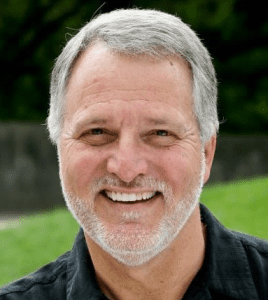 L’Abri or not L’Abri, by John Frye [SMcK: Francis Schaefffer’s critique of the American church was hugely influential on me, too, as a college student. I read all his books through No Little People.]
L’Abri or not L’Abri, by John Frye [SMcK: Francis Schaefffer’s critique of the American church was hugely influential on me, too, as a college student. I read all his books through No Little People.]
Scot McKnight suggested that I write about ten books that shaped my life. I am picking two books from each decade starting with the 1960s. For the ‘60s I’ve noted the influence of Shadow of the Almighty: Life and Testament of Jim Elliot and The Pursuit of God. For the 70s, the first book was Monganga Paul: The Congo Ministry and Martyrdom of Paul Carlson, M.D.
After seminary, my first vocational, local church ministry in 1975 was as a youth pastor in a conservative, non-denominational church in the Midwest. Our nation was settling down after the bloody race riots and turbulent student riots of the 1960s and early 70s, the ending of the Viet Nam war, the political vitriol surrounding the Watergate scandal, and the economic turmoil caused by the OPEC nations raising oil prices. The 200th anniversary of the USA seemed to be a rallying point for national unity and renewed vision. In this milieu a voice in the evangelical church emerged and gained a huge hearing. The voice belonged to Francis A. Schaeffer. Part of my ministry was overseeing, teaching, and planning events with the single, young adults. Having heard Schaeffer once while at Dallas Seminary and once at a presentation in Chicago, IL, I wanted the young adults to read through and discuss Schaeffer’s The Church at the End of the 20th Century. This book had a profound influence on my emerging ecclesiology, the doctrine of the church.
Francis A. Schaeffer, the man and his writings, have been analyzed thoroughly over the years. I’m not interested in getting bogged down in his presuppositionalism, his denigrating view of Karl Barth’s theology, and the use made of his views by the emerging “moral majority.” At the time that Francis A. Schaeffer emerged as prophet about the philosophical, political, and moral direction of European and American culture, he caused many in the USAmerican evangelical church to think. Here’s how this one book—The Church at the End of the 20th Century—shaped me.
First, Schaeffer called the church to get its head out of the sand and join the conversation going on in the wider culture. The tribe of evangelicalism I was in hunkered down in the 60s and 70s and was adversarial to the young people of the nation and, sadly, advocated for white privilege in the South. An uneasy and unspoken alliance existed between the church and the State’s dominant push for status quo.
Schaeffer was the first major voice to declare that the flag of the U.S.A. must not be flown in the church sanctuary. “Does having the two flags in your church mean that Christianity and the American Establishment are equal? If it does, you are really in trouble” (82). There can be no romance between church and state. There is no place for Civil Religion. (In my opinion, the so-called moral majority decided it would fight the church’s battle with the world’s political weapons, and got its butt kicked every time.)
Second, Schaeffer, because he loved art, film, and music, cried out that the church must listen to these passionate voices in the culture. The artists of the world were grieving insufferable loss of “absolutes” and the absence of any grounding for the values of meaning, hope, beauty, and love. Francis was like Paul in Athens paying attention and seeking to find some avenue to introduce the gospel of the Jesus Christ. “Let us understand that the beginning of Christianity is not salvation: It is the existence of the Trinity” (46). Schaeffer in his own way was offering a relational theism that culminated in the Jesus Creed: love God, love people.
Third, Schaeffer welded lived Christianity to the creeds, doctrines and belief systems held in esteem by the church. Chapter 8 “revolutionary Christianity” is worth the price of the book (which in 1970 was $3.95). He both defined and lived “compassionate Christianity;” he and Edith practiced what he preached—“open your home for community.” He challenged us to take “the unantiseptic risk” by practicing hospitality by taking in young girls with venereal disease and youth who are drug-takers. “We must practice the truth even when it is costly” (38).
All these ideas swirled around in the heads of the young adults of the church. I wish I could say we were revolutionary, but we weren’t. But one thing happened in me, and I hope in them: we could no longer accept that “church” was to be a spiritual ghetto in the dominant culture. The church by her practiced love in the name of Jesus Christ was to earn the opportunity to announce the life-changing, community-changing Gospel that Jesus is Lord and the State isn’t.











